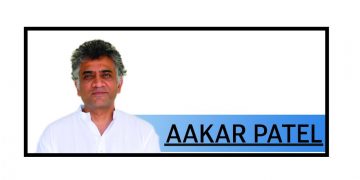Dr. Ramesh Chandra Parida & Dr. Pranab Kumar Ghosh
A mother can never be evaluated in terms of money. She is simply priceless. So is tree, which provides us all the motherly care throughout our lives. This includes clean air to breath, pure water to drink, nutritious food to eat and keeping the environment and ecology wholesome and healthy.
According to a report from the US Department of Agriculture, one acre of forest absorbs six tonnes of carbon dioxide annually, thereby reducing the greenhouse effect and limiting climate change. It also generates four tonnes of oxygen, enough to meet the requirements of 18 humans. Trees, shrubs and turfs filter air by removing dust and absorbing pollutants like carbon monoxide, sulphur dioxide and nitrogen dioxide, making the environment healthy. These also control the devastating effects of climate by moderating the heat of the Sun, heavy rain and strong winds. Properly placed around buildings, trees can reduce the need for air-conditioning by 30 to 50 per cent.
A sound ecosystem is heavily dependent on trees, which includes preservation of rain water and ground water recharge, maintenance of soil health as well as providing food and shelter to various species. Those also cause rain, the primary source of pure water.
Besides, trees appeal to our aesthetic sense and generate peace in our mind, similar to what we feel in the presence of our mother. It is said living among the greenery provides the comforts of a mother’s lap, ensures good health and long life. The services rendered by trees, quiet as they are, are uncountable.
Usually, we calculate the conventional market value of a tree by taking into consideration its total weight and quality of timber or fruits or the biomass it produces. Scientists view it from a totally different angle. They evaluate it, considering the importance of the services it renders, which may be a few thousand times more. Some of them quantify those in terms of money in order to make us, the materialists, to realise it. The pioneer among them is Prof TM Das of Calcutta University. In a paper published in the journal Indian Biologist in 1979, he had calculated that the value of various environmental benefits and services derived from a tree with an average life span of 50 years could be $1,96,250 at the market rate prevailing then. At the 68th session (1981) of the Indian Science Congress held at Varanasi, he elaborated his views. It attracted worldwide attention and found a place in UN documents. In those, the Indian currency was converted into dollar, pound, yen etc. In 1983, the Films Division produced a documentary film titled “Service of a Tree” based on the theme.
The value of a tree ($1, 96,250) as stated in the original paper of Prof Das in 1979 has been changing from time to time in accordance with the new experimental data and the price index. Therefore, it has been revised to $7, 09,760 in 2011-2012. The values of different inputs calculated in these two years respectively are: a) oxygen production (31,250 and 10,500); b) conversion to animal flesh and bone (3,000 and 3,000); c) controlling soil erosion and soil fertility (31,250 and 10,000); d) water recycling, control of humidity and air temperature (37,500 and 1,54,560); e) shelter to birds, squirrels and insects, beneficial to ecology (31,250 and 1,29,700); f) removal of SPM– suspended particulate matter, carbon dioxide, sulphur dioxide etc from air (62,000 and 4,02,000). One may multiply these by 75 to convert them into rupees.
The most precious contribution of a tree to humans is oxygen. As per a calculation, the amount of oxygen a human inhales a day is equivalent to three cylinders of oxygen available in hospitals for critical care. One cylinder of oxygen costs nearly `700. So, a person consumes oxygen worth 700 x 3 = `2,100 per day, generated free by plants. The average life-span of a human is 65 years. In his life time, he gets a share of 2100 x 365 x 65, which is approximately `5 crore worth of oxygen from the plants. It has been calculated that two trees (about 32ft tall) produce the oxygen required for one person. India has more than 130 crore people. We may calculate how much the cost of oxygen that trees provide us.
Again, the animals and birds, domesticated as well as wild, essential for our day-to-day life and which keep our ecology wholesome, need much more oxygen to breathe. Besides, the combustion of fuels in our homes, industry and transport also consume oxygen, whose cost can be astounding.
All tress are not equally capable of producing oxygen. However, those like peepal, mango, jackfruit, neem and arjun, which grow to an average weight of six tonnes in 50 years, produce nearly 7.5 to eight tonnes of oxygen.
The other benefits of trees have also been evaluated, which can be briefly stated as follows: a) Dry leaves, twigs and branches provide 40 per cent of the cooking fuel to rural India (Environment Review, 2008); b) Mangroves boost fishery yields by an average of about $37,500 per year per hectare (University of California, San Diego, 2016); c) A tree (about 32 ft tall) generates 260 lbs of oxygen a year, more than half of the requirement (386 lbs/year) of a human (The Economist, 2012); d) One acre of forest absorbs 6 tonnes of carbon dioxide and puts out four tonnes of oxygen per year (US Department of Agriculture); e) An urban tree gives 53 to 67 times return to every dollar spent on it, which is in terms of storm management costs, waste water treatment, improving air quality, reducing energy requirement for cooling etc (Christian Science Monitor, 2006); f) Trees act as buffers and absorb noise (nearly 50 per cent), thereby reducing noise pollution (US Department of Energy/Environment News, 2020); g) The evaporation from a single large tree can produce the cooling effect of a 10-room size air conditioner operating 20 hours a day (US Department of Agriculture); h) Trees are said to reduce criminal mentality and induce self-discipline and greater mental health.
On the other hand, people living in areas without trees, experience more deaths due to heart and respiratory problems (Earthshare.org). For a wholesome environment and balanced ecology, at least 30 per cent of the Earth’s land area should be covered with trees and forests. However, in many parts of the world, those are much below this critical limit; and to make matters worse, those are declining fast @ 15 billion trees a year.
The time has come to understand the real value of tree and protect it. Otherwise, increasing global warming and climate change along with various kinds of environmental pollution and ecological disaster will continue taking their ever-increasing tolls.
Dr. Ramesh Chandra Parida is a retired professor of Chemistry of Odisha University of Agriculture and Technology. Dr. Pranab Kumar Ghosh is assistant director, National Institute of Rural Development & Panchayati Raj, New Delhi.






































